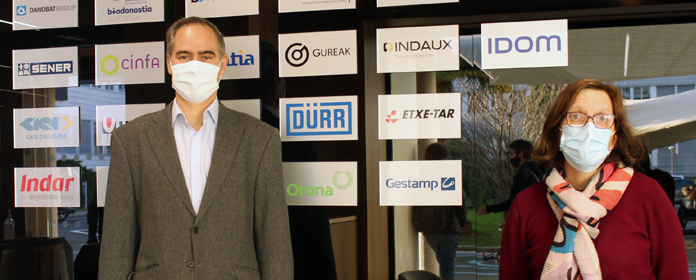A research of the University of Navarra proposes improvements for the unloading of industrial silos.
Study relates granular particle exit velocity to the probability of clogging

PHOTO: Manuel Castells
A research developed at the University of Navarra shows that the higher the discharge speed of material from an industrial silo, the less likely it is to clog. This is one of the conclusions of the doctoral thesis of Diego Gella, doctor by the department of Physics and Applied Mathematics of the School of Sciences of the University of Navarra.
These advances are important for sectors that process raw materials in granular form and store them in silos - as could be the case in mining, agriculture or various types of industry - and for the study of clogging as a global phenomenon. "It must be taken into account that the clogging phenomenon is present in other systems such as particle suspensions in liquids, subject active or even living beings, for example in evacuation processes with human beings," says Gella.
Gella's study relates kinematics - the speed at which particles pass through the outlet orifice - and the probability of clogging in the discharge of granular silos. Previous programs of study in this field showed that there is a higher probability of clogging when the outlet orifice of a silo is reduced and discharged by gravity. This research determines that the probability of clogging increases not only for geometrical reasons - when we reduce the size of the outlet hole - but also when the granular material passes through the hole at a lower velocity.
In order to carry out this study, Gella designed a two-dimensional silo with a conveyor belt under the orifice to control the particle velocity. "Using the data analysis extracted from experiments in which avalanche sizes are measured it has been possible to determine the probability of jamming for different orifices and belt speeds. In this way, it has been observed that the discharge velocity significantly affects the probability of jamming," notes the young researcher.
For Diego Gella, the advances in this field are relevant because of their applicability to various fields, especially industrial activity, in which silos are used for the storage of granular particles. "It should be noted that the vast majority of materials used in these sectors, whether raw materials or manufactured products, are processed, transported and stored in granular form," he concludes.





